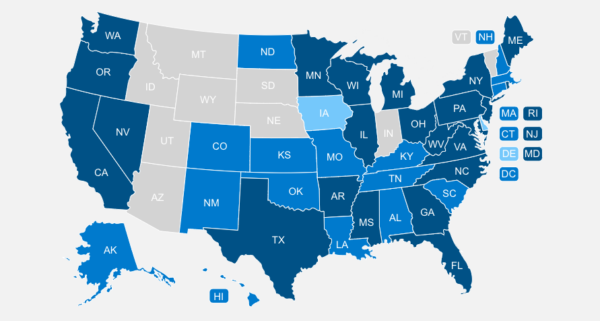The IRS is Temporarily Expanding the Use of Electronic Signatures
September 2, 2020
Nonprofit Board Meetings
October 23, 2020Drive Your Nonprofit Forward Through Uncertainty

Drive Your Nonprofit Forward Through Uncertainty
The COVID-19 pandemic and the resulting economic crisis emanating from the shutdown of businesses has thus far presented significant and unique challenges for nonprofit organizations. The invaluable financial support that nonprofit organizations depend on is lacking due to the combined impact of the pandemic and economic insecurity. In addition, the need for social distancing has heavily affected the availability of the volunteers that nonprofits rely on to carry out their work.
The CARES Act did bring with it much needed financial relief, however, the economic impact of the pandemic, the curtailing of operations and fundraising caused by social distancing, have compelled many nonprofits to temporarily shut down. Most nonprofits that have remained open in spite of the enormous difficulties are finding it challenging to balance the increase in demand for their services with a drop in revenue.
While there is a gradual re-opening of public spaces and as social distancing restrictions are gradually being eased, nonprofit organizations must make short and long terms plans in this ever-evolving situation. It might take longer than expected for life to go back to normal and there is always the possibility that social distancing restrictions could be reinstated.
The following are some suggestions to consider in a bid to alleviate a challenging time:
Managing Nonprofit Operations During A Pandemic
Protecting the health of staff and the community in an ever-evolving crisis requires clear and constant communication with staff. It is important that management keeps on informing staff on best health practices. Over time, as the public becomes accustomed to living in a pandemic, it is human nature to become complacent, thereby exposing themselves and others to possible infection. It is important to constantly communicate to staff your concern for them and the importance of slowing the spread.
Have a good understanding of how your nonprofit’s work might be affected by reduced staffing scenarios vis-a-vis service demands. For example, implement operational contingencies such as work-from-home and split shifts when possible to reduce the number of staff on-premise.
Make sure you communicate to all stakeholders about how your organization is responding to the pandemic. Take advantage of modern virtual meeting apps to maintain constant communication.
Fundraising During a Pandemic
As mentioned earlier, the CARES act provided much needed financial relief, but the support is not permanent. The need to keep on raising funds to sustain charitable work remains. There is no doubt that fundraising is made more challenging in times of economic downturns. Potential donors might be more hesitant in donating or might donate less than they would otherwise have donated because of the uncertainty. Historically, individual giving has correlated closely with gross domestic product. In other words, when GDP slows, charitable giving follows.
It is time to learn more about your more affluent donors. Reach out to those big donors and communicate with them clearly as to how the pandemic has impacted your outreach to communities in need. Tell them why you are reaching out to them in particular. Multiple studies have proven that big-dollar donors are likelier to give during a crisis that smaller donors.
Leaning on big-dollar donors is logical, but don’t make any assumptions that because the economy is hurting, smaller donors cannot give. Just make sure that in your ask you acknowledge their fear and uncertainty in this health crisis, so as not to come across as out of touch. In addition, your recurring donors, big or small, are much likelier to keep giving.
In a free marketing economy like ours, there are some companies and individuals who prosper in light of a pandemic. Consider cleaning supply companies, consider grocery stores, consider online clothing companies who came out with their own line of masks. Reach out to them and inquire about the possibility of entering into a commercial co-venture.
Even though it might be a long and cold winter, you know that summer will come again. This too shall pass. We will all get through this. Take necessary precautions to protect your staff but remain defiant in the face of the challenges. In fact, it is time to cultivate optimism. Continue to fundraise, continue to make those fundraising phone calls, and continue to send out mailers. Make sure you demonstrate genuine gratitude to your staff and donors.
Written by Franklin Asongwe




